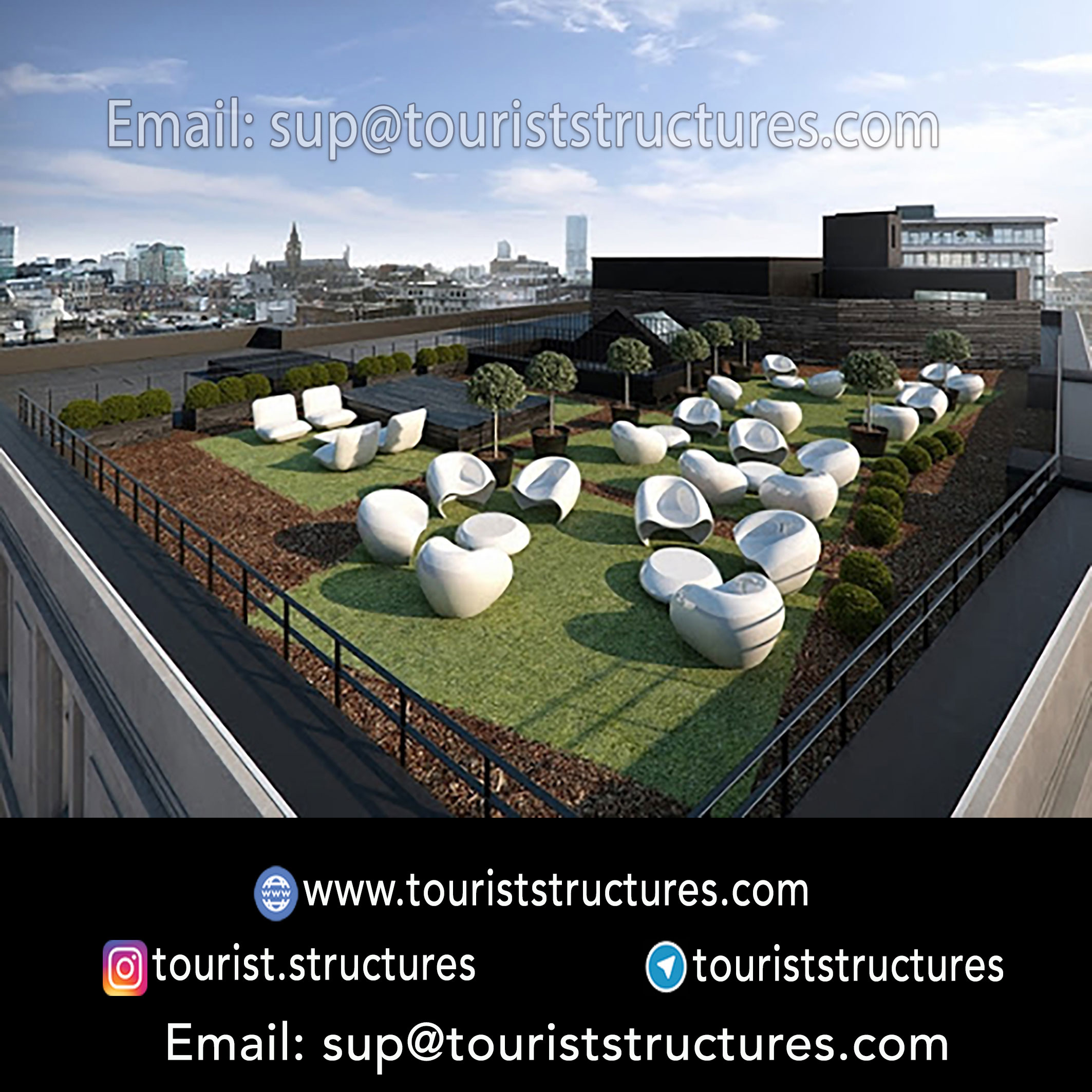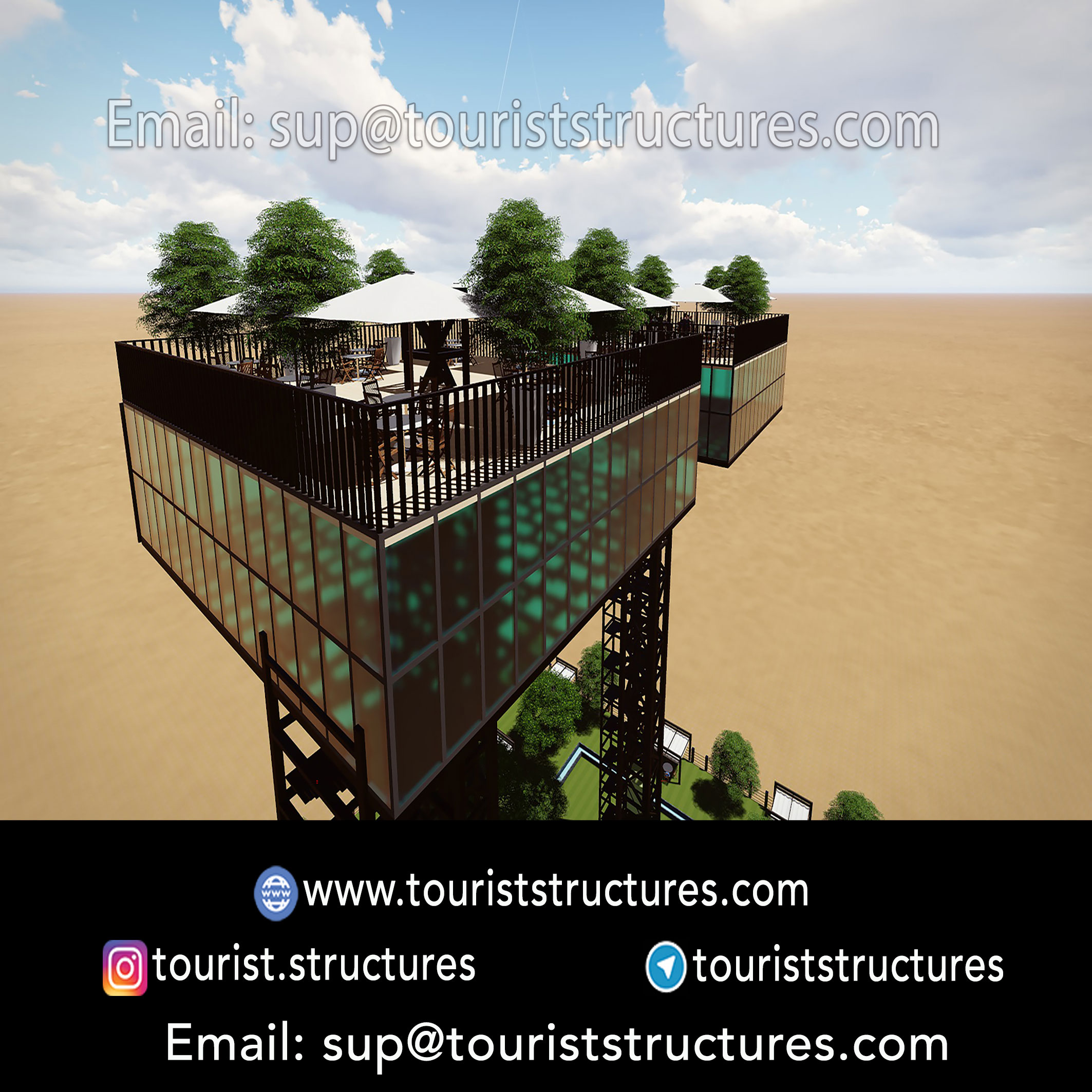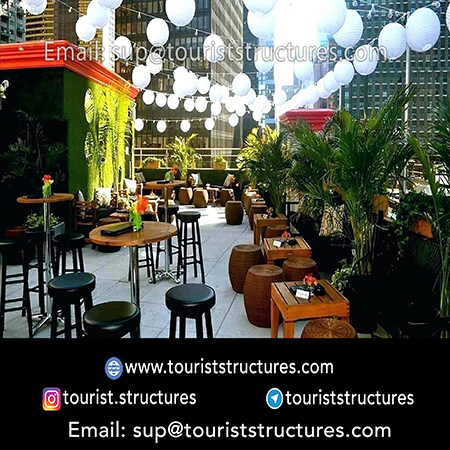Pasargad Company, designer, builder, and executor of roof gardens (in restaurant towers)
Undoubtedly, you have laid eyes on those pristine and captivating rooftop gardens adorning houses. Yet, amidst the allure, the burning question emerges: What exactly are these rooftop gardens, and what variations do they come in?
In layman’s terms, a rooftop garden, or simply roof garden, is essentially a green oasis crafted atop roofs or terraces, where vegetation thrives on an artificial substrate above the surface level.
A roof garden, found atop a variety of buildings ranging from residential to commercial and industrial structures, serves multiple purposes beyond mere decoration. It functions as a playground, offering shade and shelter, enhancing architectural aesthetics, controlling temperatures, providing recreational spaces, serving as habitats and food sources for birds, and ultimately creating a lush green oasis amidst urban landscapes.


An example of roof garden implementation in residential, commercial and recreational buildings.
A concert hall is just one of the amenities nestled atop restaurant towers, its size and capacity intricately tied to the tower’s dimensions and the financial investment poured into its construction. undoubtedly a rooftop garden emerges as a vital attraction, offering a multifunctional space for recreation, play, temperature regulation, architectural enhancement, and simply as a lush green escape. Constructed as an open-air oasis, the roof garden brings a refreshing touch of nature, enticing customers with its verdant charm and enhancing the overall ambiance of the establishment.
Green architecture, or sustainable architecture, stands as a potent instrument for enhancing quality of life. As you are aware, plants serve a pivotal role in mitigating pollution. Thus, in densely populated cities plagued by high pollution levels, rooftop gardens can be designed atop houses to purify the air. These green roofs not only cleanse the atmosphere but also significantly enhance the aesthetic appeal of urban architecture. Undoubtedly, these rooftop oases, in contrast to plain, uninspiring rooftops, uplift people’s spirits and contribute to their overall well-being. Such implementation of roof gardens presents a remarkable opportunity to generate increased revenue and profit, while simultaneously fostering healthier and more vibrant urban environments.



View of a Roof Garden atop a restaurant tower
Absolutely, many individuals relish the experience of dining in a distinctive and opulent rooftop garden. The rooftop garden perched atop a restaurant tower is undeniably a unique and enchanting space, providing patrons with a splendid view as they enjoy their meals.
While the revenue and loyal customer base of a rooftop garden are widely acknowledged, the presence of an exceptionally stunning garden situated at a lofty height with a distinctive view entices everyone to dine at least once in such an establishment. The experience of ascending through glass elevators to reach the rooftop garden adds an exhilarating touch to the dining experience.
Advantages:
The key advantages of a rooftop garden constructed atop a restaurant tower, in contrast to conventional gardens built at ground level, include:
1. Elevated Experience: Guests are treated to an open, green space at a height, providing a panoramic 360-degree view.
2. Unique Access: Visitors ascend to the rooftop garden space via glass elevators, adding an element of excitement to their journey.
3. Climate Control: The rooftop garden creates a pleasant and inviting atmosphere, offering cool air during hot seasons.
4. Tranquil Oasis: The distinct ambiance of the rooftop garden, in contrast to the bustling city below, fosters a sense of serenity, allowing guests to unwind and experience peace of mind amidst the greenery.
Revenue:
By integrating a rooftop garden as a core amenity atop the restaurant tower, investors not only broaden the scope of facilities but also unlock various revenue streams, including:
1. Profit from serving food, beverages, and other amenities, catering to restaurants, coffee shops, and similar establishments.
2. Leveraging the rooftop garden as a magnificent venue for hosting exclusive events, filming, and other activities.
The idea of installing a green roof can seem daunting to some people because they’re unsure where to start and concerned about the associated costs. In such instances, it’s advisable to entrust the work to specialized and professional teams who can execute the project with excellence while adhering to necessary standards. With proper drainage and the selection of suitable plant species, concerns about establishing a roof garden can be alleviated. The expert team at Pasargad Company possesses the requisite skills for designing and implementing this type of roof. By leveraging the company’s experience and expertise, you can enjoy a thriving green roof for years to come.
Creating a rooftop garden can begin with simply placing a few pots on the roof and, as it progresses, can transform into a stunning park-like space. The selection of a rooftop garden design depends on several factors, including the building’s structure, its intended use, climatic conditions, and even personal preferences!


An illustration of roof garden implementation within residential, commercial, and recreational structures.
Introducing the various types of roof gardens:
Extensive roof gardens:
In this style of rooftop garden, plants with shallow root systems are cultivated.
The planting bed is quite shallow, with a maximum soil depth of 20 centimeters. Extensive roof gardens are notably more economical compared to other types, featuring predominantly shallow-rooted plants.
Semi-intensive roof gardens:
Semi-intensive roof gardens entail cultivating plants with greater root volume, requiring a planting bed depth ranging from 30 cm to 1 m.
In this green roof variant, a diverse array of shrubs, including strawberries, watermelons, and medicinal herbs like mint and lavender, as well as simple grasses, can thrive. Design considerations primarily revolve around managing the structural load imposed by the vegetation.
Intensive roof gardens:
As the name suggests, this garden boasts deep, voluminous soil beds to accommodate intensive planting.
In this pricier garden type, all manner of trees, ornamental plants, and flowers are cultivated, typically reserved for large and prestigious buildings.
These gardens adorn the rooftops of expansive structures, providing walking paths and benches for relaxation.
Aria Gostar Pasargad Khavaran Company excels in crafting magnificent rooftop gardens atop tall buildings, offering an unparalleled sense of serenity amidst the urban hustle and bustle. Just like humans, plants are vibrant and exquisite creations of nature, their presence soothing to the soul and psyche.

An illustration of roof garden implementation atop residential, commercial, and recreational structures.
Among the ideal locations for constructing a rooftop garden are multi-storey shopping malls, hotels, and passageways, meeting the undeniable needs of clients and customers. Aria Gostar Pasargad Khavaran Company stands prepared to create elegant rooftop gardens with an enchanting ambiance in shopping malls, hotels, and beyond, offering you an unparalleled experience.


An example of a rooftop garden situated atop a tower’s highest floor.
Certainly, such a stunning location is bound to allure customers and visitors alike, enticing many to indulge in drinks and meals amidst the splendor of a magnificent rooftop garden.
Aria Gostar Pasargad Khavaran Company is poised to transform the rooftops of your apartments and buildings into captivating spaces, utilizing cost-effective methods and the latest gardening techniques available in the city.
With a commitment to modern engineering principles and global standards, Pasargad Company stands out as a premier firm specializing in the design, structural calculations, construction, and implementation of roof gardens both domestically and internationally.
Clicking on any of the green options will lead you to the corresponding sub-pages of the website.
